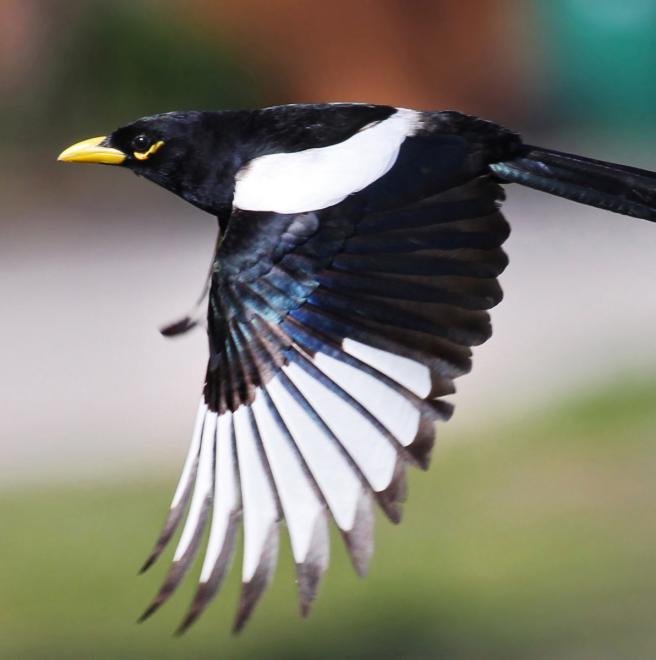

This counterpart to the Black-billed Magpie is found only in California, roaming oak woodlands and often nesting in small colonies. Climate change threatens to wipe out 80 percent of this species' current summer range and 100 percent of current winter range by 2080, according to Audubon’s climate models. The bird favors mature oaks for nesting, and the future of the magpie may depend on how the trees respond to changing climate.
Found only in California, this bird is named for its distinctive bill color. A relative of the crow, the Yellow-billed Magpie lives in the open oak savannahs of the far west. It nests in mature oak trees, and eats mostly ground-dwelling insects, along with acorns, small fruits, seeds, carrion, and the occasional small rodent.. A very social bird, it quickly flocks to the scene of any fight or scuffle. The species managed to rebound from West Nile Virus, which killed half of the entire population in just a few years.
Explore more birds threatened by climate change around the country.





















It's easier than you think to make a difference. Become an Audubon member today to help birds facing climate change.